Last updated on June 9th, 2024
Emptying a single radiator is sometimes useful for adding chemicals, replacing the radiator, or connecting a hose to the radiator valve to drain the system when there’s no drain-off valve.
I have been a full-time heating engineer for over a decade and have drained many central heating systems and single radiators over the years.
How to Drain a Radiator
To drain a single radiator, you will need to isolate it from the system by closing the two radiator valves.
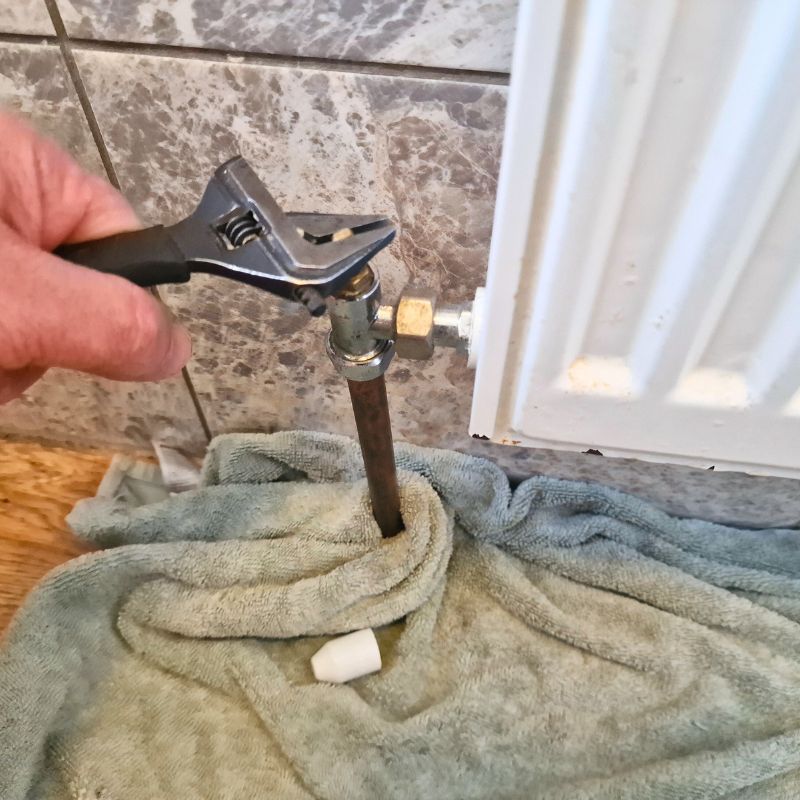
When the radiator is isolated, there are two ways in which I drain it:
- Remove the radiator (quickest way)
- Drain it into a tub (easiest and most common way)
Removing a Radiator
Removing the radiator and emptying it down the drain or toilet is the quickest way to drain it.
This can be very difficult to do sometimes, especially on large radiators, but if it’s a really small radiator then it’s quite simple.
How to remove a radiator:
- Put some old towels down under both radiator valves
- Turn off both valves
- Open the bleed valve screw and catch the water
- Wait until the water stops coming out
- Close the bleed screw
- Crack the side nuts on the radiator valves that connect the valves to the radiator with an adjustable spanner
- Undo the nuts and pull off the valves
- Put your thumbs over the tails on the radiator to the keep water in (it will take two people unless it’s a tiny radiator)
- Lift it off the brackets and flip it over keeping thumbs over the tails
- Empty it down a drain outside or a toilet
- Refit the radiator
Draining the Radiator in Place
The easiest way to drain a radiator is to leave it in place and empty it into a tub, but doing it this way can take a long time.
You can use any kind of tub to do this but a Plumb Tub is by far the best thing to use. They actually clip around the pipe and catch the water if it runs down the pipe.
Draining a Radiator Video
Step-by-step Guide
Here’s how to drain a radiator:
1. Put a Towel Down
Put at least one old towel down under the radiator valves and around the pipes to catch any water spills.
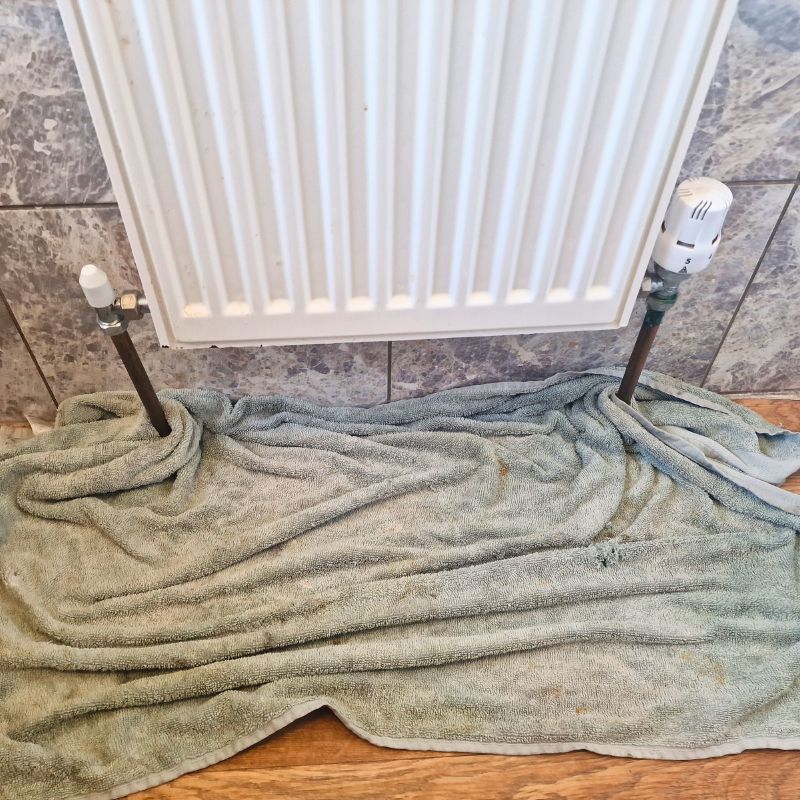
Bare in mind that the water could be thick black and sludgy that won’t come off anything it touches.
2. Close the Valves
Turn off both radiator valves fully by turning them clockwise as far as they will go. Turn thermostatic valves to 0 or off, and lockshield valves will need an adjustable spanner or water pump pliers to turn them.

3. Place a Tub Under a Valve
Place a tub under a radiator valve to catch the water emptying out. If you don’t use a Plumb Tub it will be a lot harder to catch the water and much more likely to make a mess.
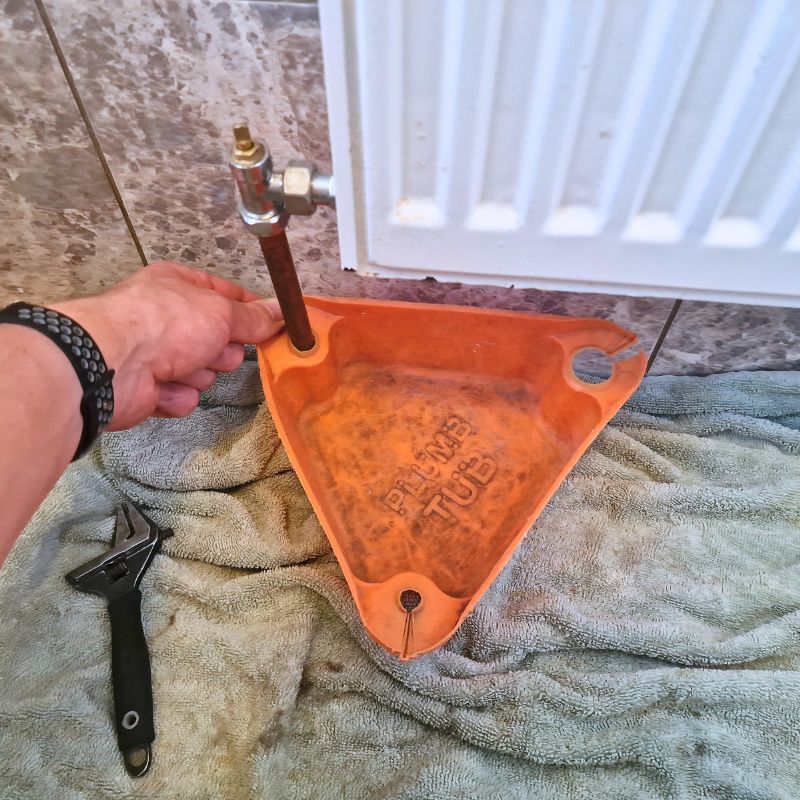
4. Open the Bleed Screw
Hold a bucket or towel under the bleed valve and open the bleed screw with a key to release the pressure. Catch the water that comes out.
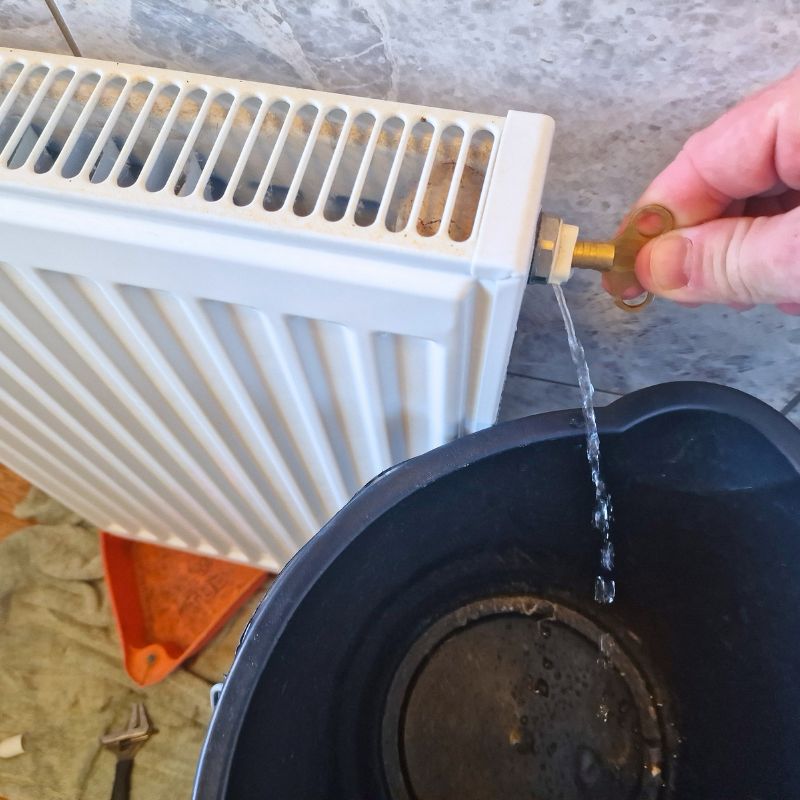
Wait until the water stops coming out, if it doesn’t stop, there must be a faulty radiator valve that’s not working so you’ll have to drain another radiator or drain the system.
5. Crack a Valve Nut
You might need to hold the valve still with some water pump pliers but most of the time you don’t.
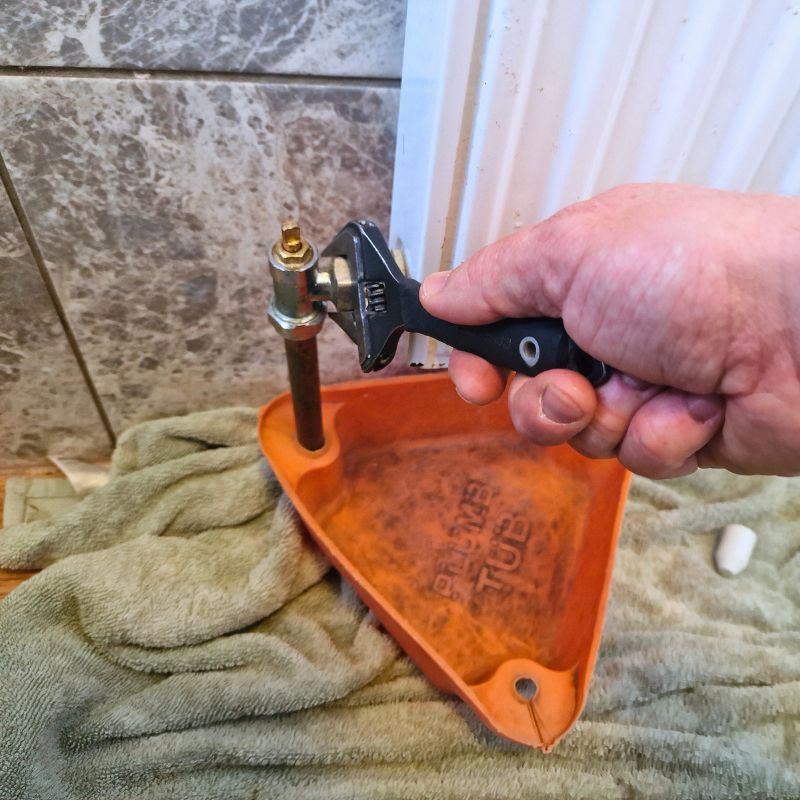
Crack the side nut on the valve connecting the valve to the radiator by turning it anti-clockwise with an adjustable spanner.
Make sure the bleed screw is still open and wait for the water to come out of the valve nut.
6. Let the Water Fill the Tub
Catch the water from the valve nut in the tub and wait for it to fill up and then tighten the nut to stop the water coming out.
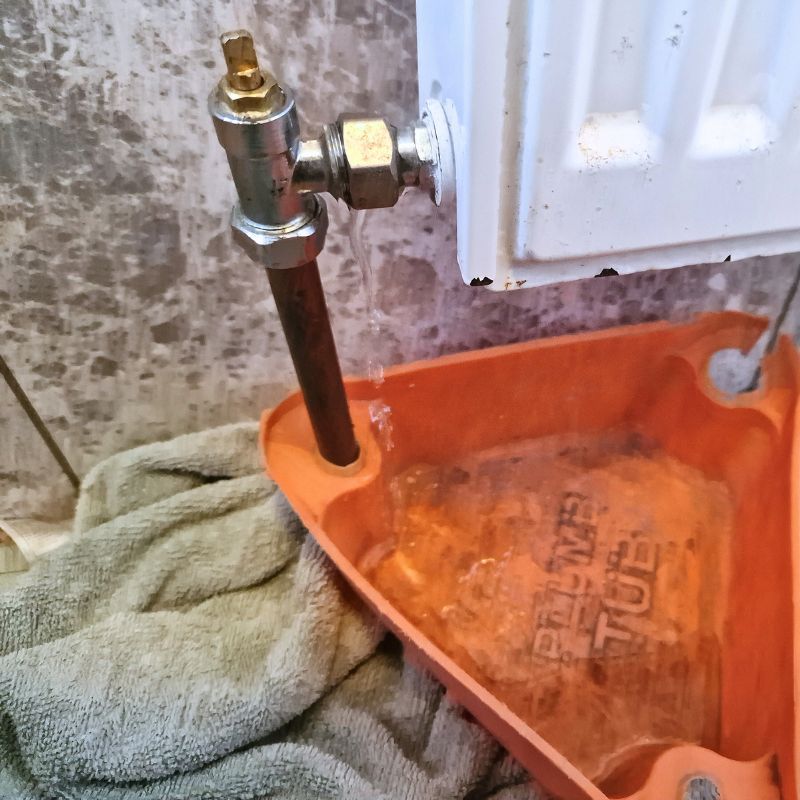
7. Empty the Tub
When the tub is filled with water, empty it into a bucket to save you having to keep walking away, but you can take it to a toilet or drain outside to empty it.
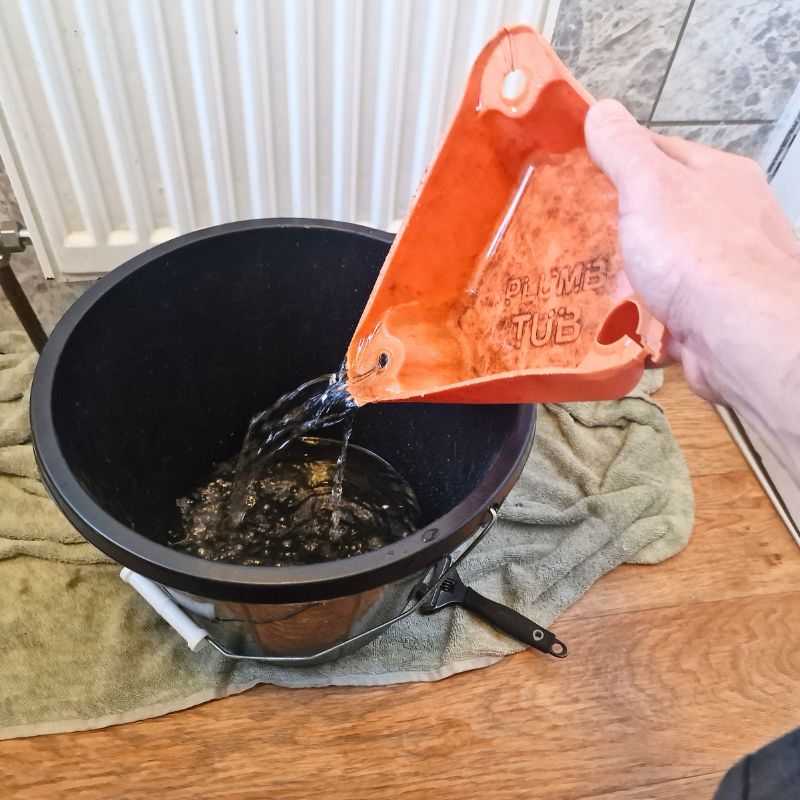
Repeat the process until the radiator is empty. This can take a long time so emptying the tub into a large bucket will save some time.
Summary
Emptying a radiator can be a nightmare sometimes, especially if it’s huge.
If you have ancient radiators and valves, or you know the system water is really dirty, you might be better off draining the full system.
However, draining a new small radiator is quite easy most of the time, and a Plumb Tub will make the process much better.
Feel free to ask me any questions in the comment section below and I’ll try my best to help.
Please share this post if you find it helpful.

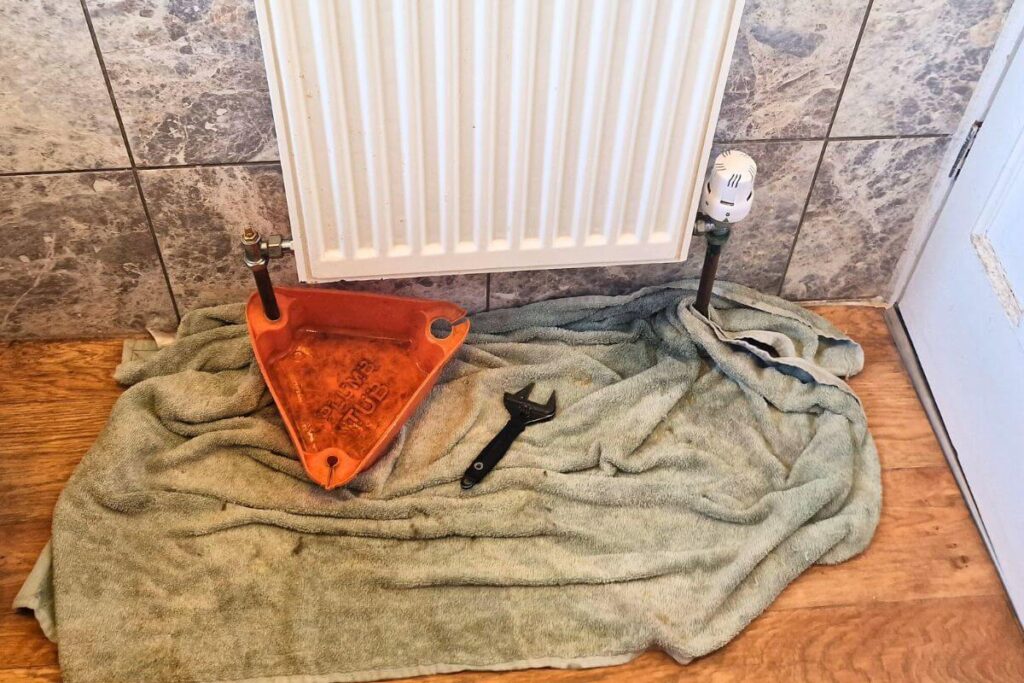

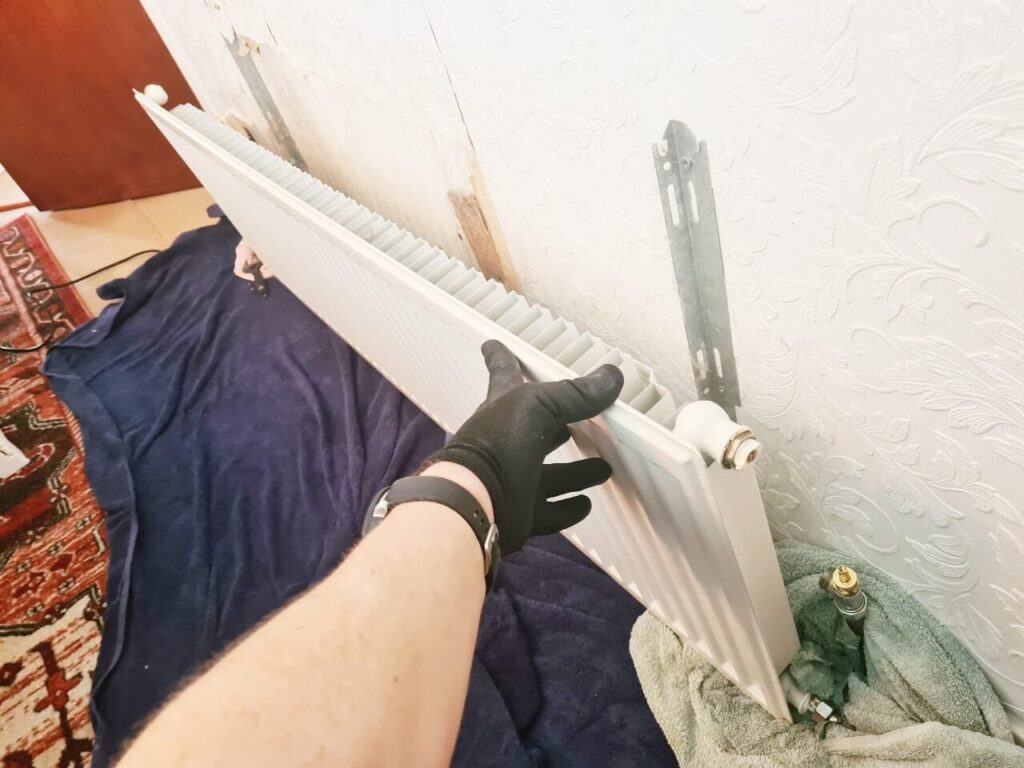
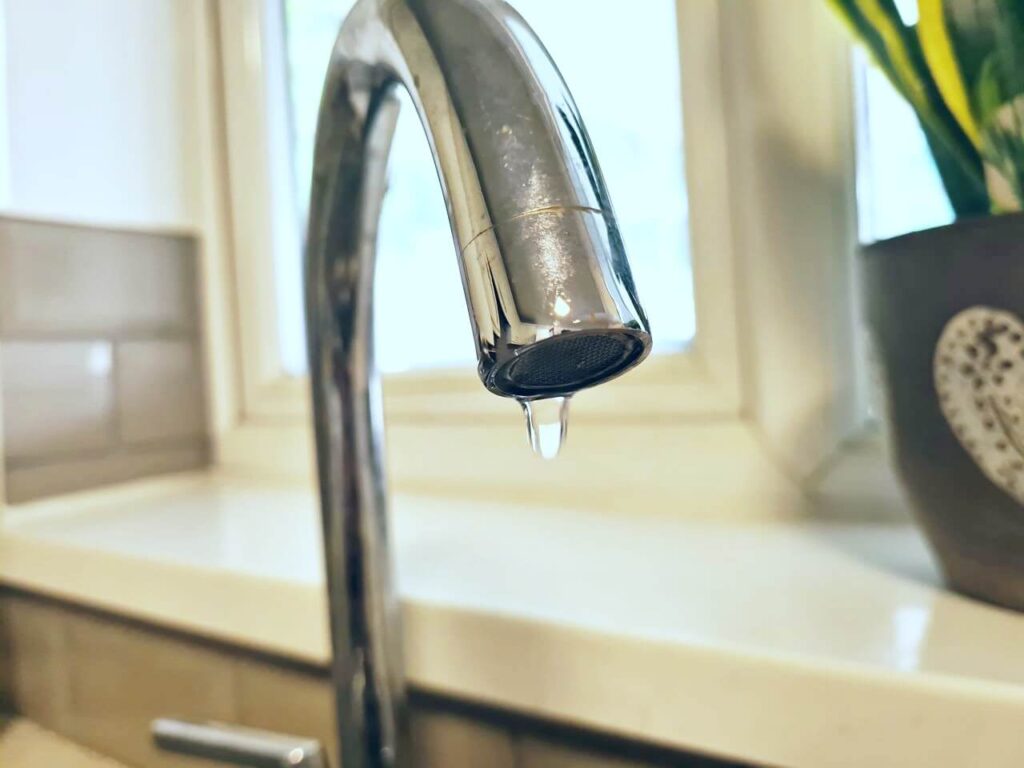
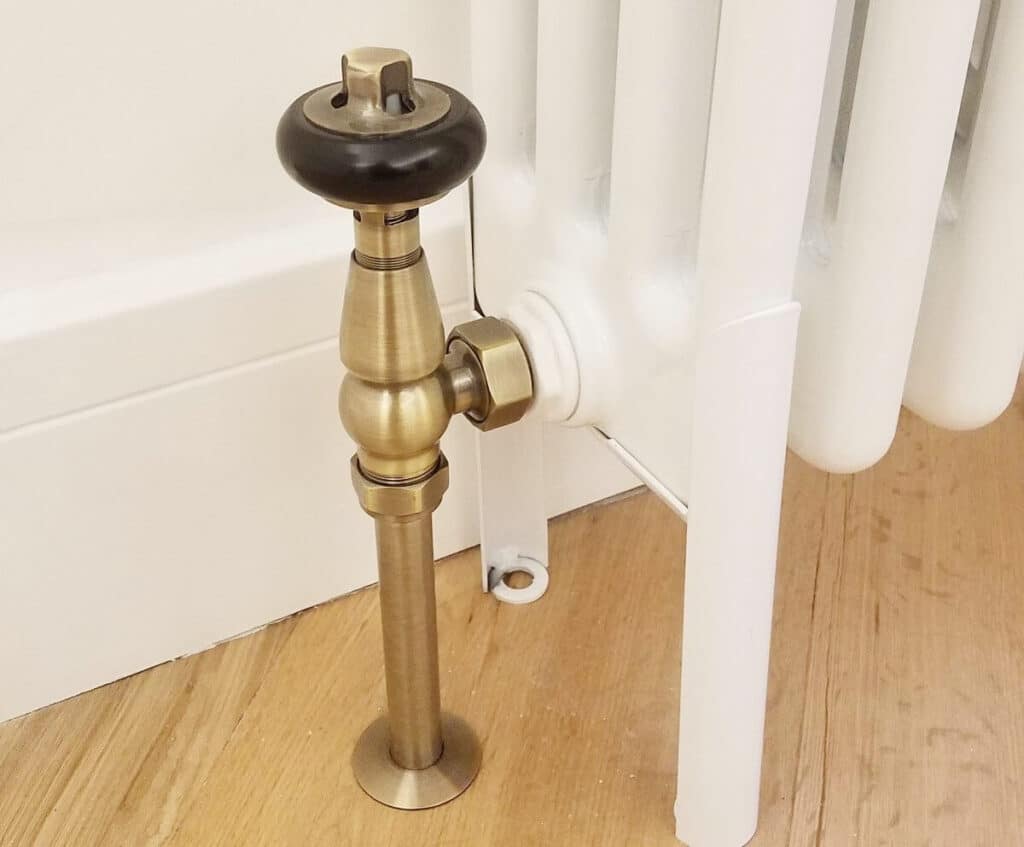
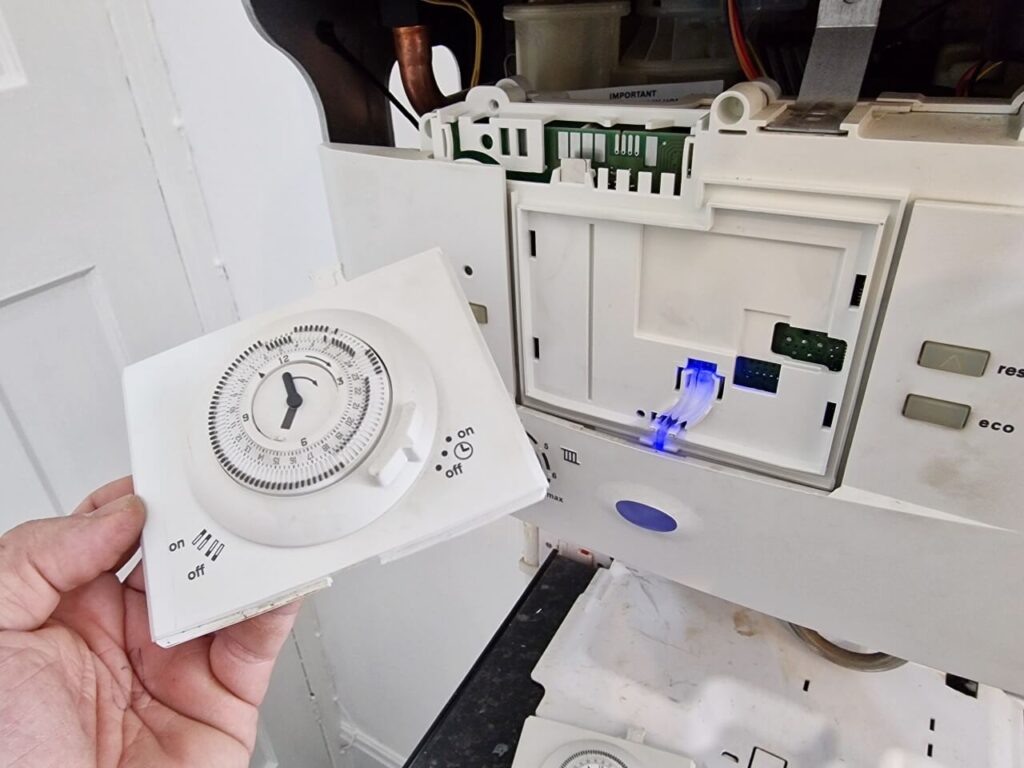
Thank you Steve.
Your Very informative, knowledgeable and straight to the Point. A credit to your profession.
Regards Alan.
Thanks Alan, much appreciated